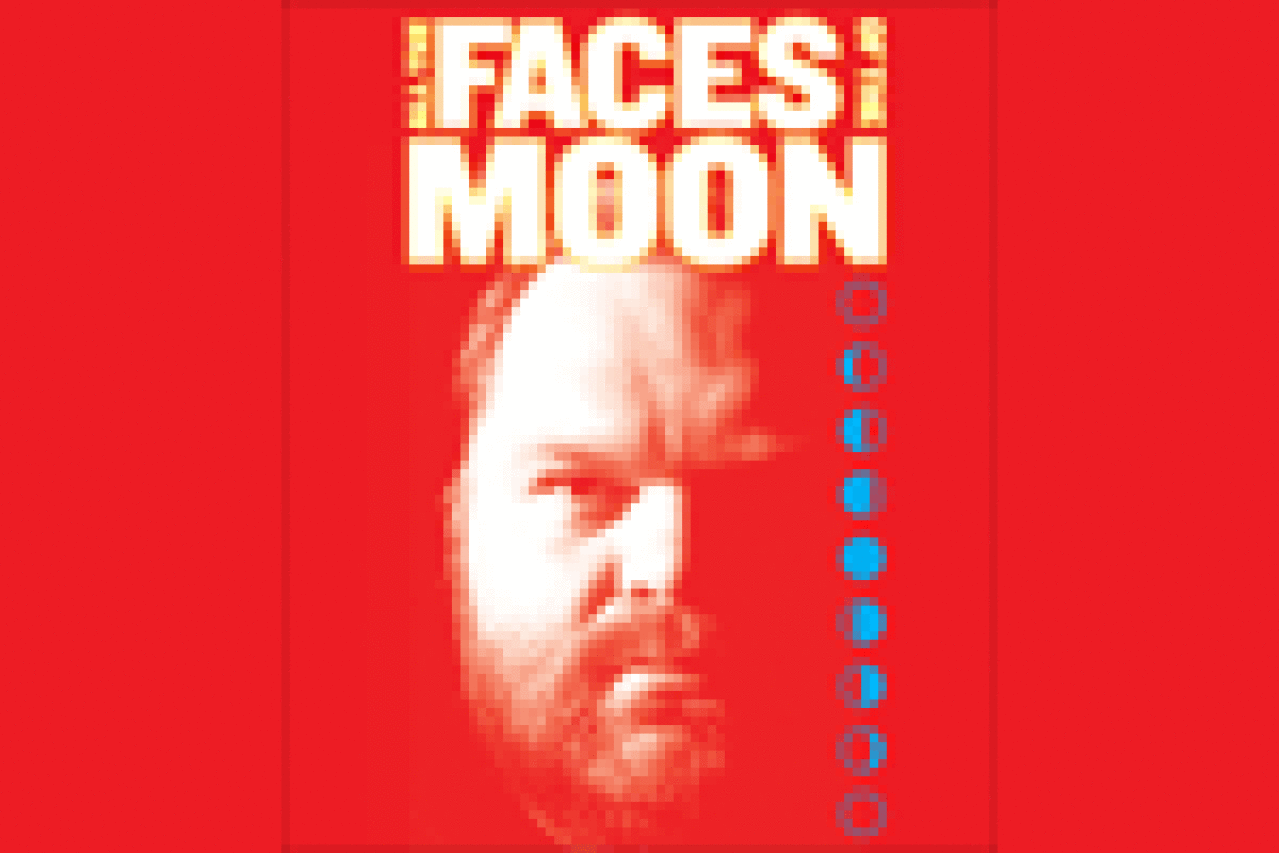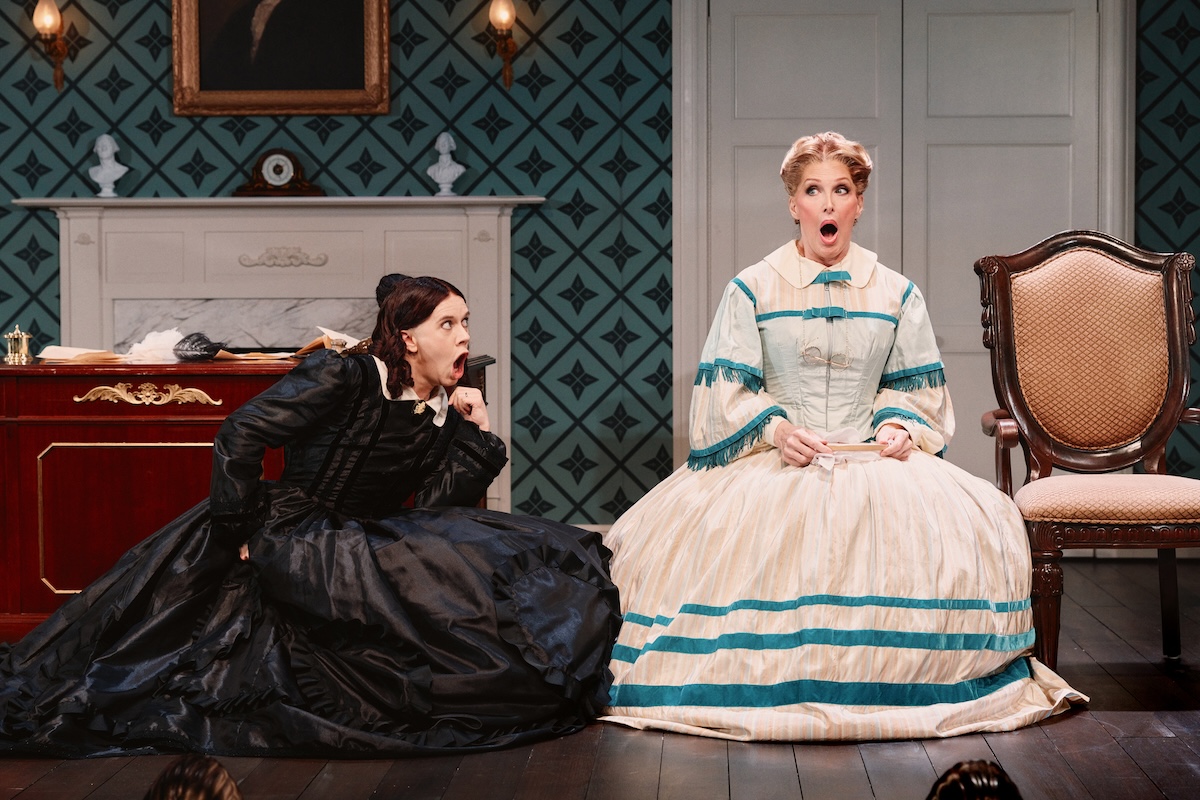Firsthand: Mike Daisey, on the 29 Monologues That Make Up the 29-Night All the Faces of the Moon at the Public Theater

(© Joan Marcus)
As I write this it is near noon on the seventh day. I have just turned over an hourglass my director bought me as a Christmas present. It’s oversized, perfectly clear, with green sand like Oz that trickles the time. It’s running.
I know that this glass runs out in 54 minutes, or as it’s often thought of, the better part of an hour. I know that when it runs out this short essay on what this process is like must be over. It has to be over because in a world where every single day you have to create a full-length spoken monologue that evening, for 29 nights without ceasing, and all the stories must weave together like an immense live theatrical novel, you can’t afford writer’s block.
It’s also merciful. An hour is enough. Is there anything more dreadful than hearing about someone’s process? “What’s your process?” we are always asked in interviews, and as we open our mouths we all know the terrible truth: we are about to bore everyone, including ourselves, to tears.
Here we go.
I’ve always worked this way. I don’t script. I don’t take notes. It’s not this way across my life — I love writing, trained to be a poet in school, and have written many things, including a book. I love the written word in the abstract.
But when it comes to my most important work I am allergic to every element of the written word. When I was young I thought this was an affectation or an illness. I thought if I were a better person, more like a theatrical John Updike (who, for some reason owing to New England puritanism, is always who I would think of) I would take copious notes, and script, and lock things down. As though art is an unruly set of luggage that needs to be managed.
The truth is that I’m a storyteller who works in the air at the moment the show is spoken. It exists for that moment and then is gone, winding itself out into memory and reflection. The best analogy is jazz, which has compositional rigor and structure, while preserving fluidity and the extemporaneous quality of being alive in the moment.
In the old days I would be a storyteller, the precursor to modern theater. I work the way the Greek plays originally worked: chains of stories, chains of monologues describing stories that happened offstage, brought alive by the storyteller.
This latest show is called All the Faces of the Moon and it is a lunar cycle — a single epic story told over 29 nights, with a different monologue on each night. The stories stand on their own, but they intertwine and grow together to create a gigantic theatrical novel. If I get through it and complete it, it will be the largest theatrical narrative work since the 13th century, when mystery plays sometimes absorbed medieval villages for weeks.
It’s certainly absorbing me. I get up in the morning, and post links to the podcast of the night before, which thousands of people are now following and listening. I then manage show issues, check on marketing, make sure our houses are well attended, and other tasks because we believe in the living theater—an artist’s job does not begin and end at the stage.
Then I head in to the theater early and sit in my dressing room. I then summon up all the work I did the last four months preparing for this story and I look at the oil painting that I commissioned Larissa Tokmakova to create — she painted one for every night, and I helped her shape the imagery to resonate with the cards of the Tarot deck, collective unconscious symbols, and elements of the stories as they spoke to me. I then spend the next five hours drafting that night’s outline, though I have been working on that evening’s stories for the last five months.
Then I do the performance, and afterward I discuss the night with my director as we grab a taxi home. Then we begin editing the audio and video, and work on that until late, refining the recording so that the podcast will serve as a kind of echo of the live experience, and I post that before bed.
When I wake up I turn my hourglass over for the next day, and it all begins again.
And what is this story about?
It’s a mythic story about New York City. It’s Mark Helprin crossed with Philip K. Dick. It’s an occult journey into a secret history, filled with magical realism and mystic hermaphrodites and Death himself riding his pale horse across the East River. It’s about what’s happened to the city in the years I’ve been here, the daughter of the moon and her iPhone, the rise of corporatism, Dionysius partying all night in a Chelsea apartment with a crown of Budweiser cans, and a dark faerie tale for grown-ups.
It’s so much more. But my hourglass is empty, and I have a story to tell.
Mike Daisey is a monologist, author, and working artist. His new show All the Faces of the Moon is running nightly now at the Public Theater, and you can hear the entire story so far on the podcast by visiting mikedaisey.com.

(© Sabrina Fonseca)











